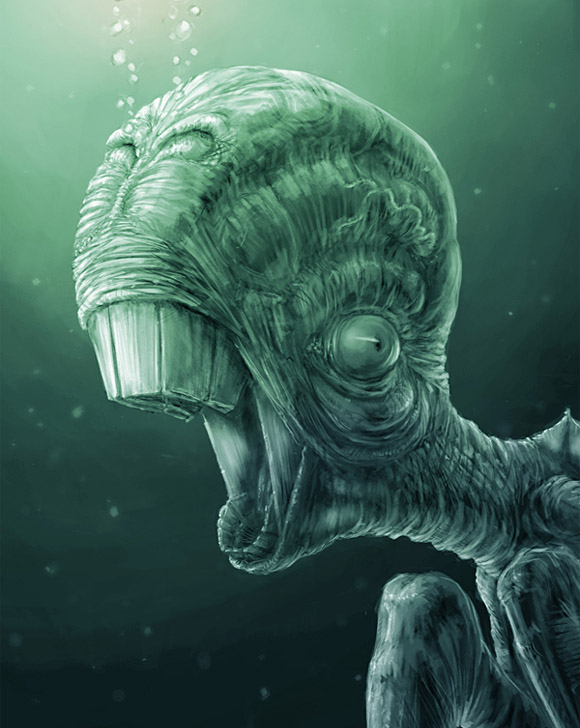
OTHER SUNS
Monday, July 9, 2012
Monday, July 2, 2012
THE MOONS OF MARS
Saturday, June 30, 2012
ROADSIDE PICNIC
A New Translation of The One Russian Science Fiction Novel You Absolutely Must Read
Thursday, June 28, 2012
THE WATERS OF TITAN
Wednesday, June 27, 2012
Sunday, June 24, 2012
DELTA QUADRANT
What Do You Think?
Friday, June 22, 2012
BRAVE NEW WORLDS
ZAANUSSII

RIGELAN DEFENCE FORCE

THE TWINS

AZRIL

KELEV

STEINMAN CLASS B HEAVY HAULER
Steinman Class B Heavy Hauler

While it will never get the glory of a Crossbow, or even the quiet respect of a Starmaster, the Steinman is, arguably, the most important starship in human space. The vessel, over 70 years old, is quite simply the lynchpin in all interstellar human commerce, without which there could be no Protectorate.
Little more than a command module, a pair of engines and a cargo hold, the Steinman is a simple, but effective design that has kept colonies, core worlds, and the military supplied through peace, war, and across a hundred varying climates.
Not at all fast, and usually completely unarmed, the ship’s only defense is a powerful passive sensor system, and a negative mass drive with the shortest warm-up time of any non-military human ship in operation. Often traveling in convoys with a few escort vessels, a pack of Steinman under attack will quickly go to FTL using preset coordinates, so that there is a much shorter navigational computation time. An average ship takes 1D4 minutes to perform a jump, but a Steinman can usually do it in half that (most military ships have the same jump time).
With a crew of six, a modular cargo hold that can haul up to 500 tons, and a very reasonable price tag, it is the ship of choice for most large corporations, and is the transport of choice for the military as well. But even the military versions rarely have armaments. To keep space consumption to a minimum, the Steinman has a very small power plant. At most, it might be able to be fitted with a turret, but not a very powerful one. A much more reasonable option for arming the Steinman is to put missiles on it, which need no large power source.
Steinman haulers are most often encountered hauling food, raw materials, dry goods, water, large groups of people and military supplies. Pirates tend to avoid them because highly valuable cargo is much more likely to be on a smaller, better armed, light or medium transport. Some budget colony operations also use them to transport colonization supplies and colonists. By dividing the massive cargo bay into two decks filled with bunk beds, the Steinman can carry up to 600 passengers.
Model: C-98 Class B Heavy Hauler
Class: Freighter
Crew: 6, capable of carrying up to 600 passengers
M.D.C. by location
Sensor array – 150
Engine pods (2) – 400 each
*Main body – 2,000
Command module – 800
*Depleting the M.D.C. of the main body would disable the vessel, causing the command module to detach as a life pod. Steinmans rarely explode; usually only when they are carrying highly flammable or volatile cargo.
 Speed
Speed
Maximum Sublight Speed: .2 C, or 20% of the speed of light
Maximum Acceleration/Deceleration Rate: 4 Gs per melee round
Maximum FTL: 365 x C, or one light year per day, half that speed for civilian models.
Top Atmospheric Manuevering Speed: Mach 1.5, but can attain escape velocity on a full engine burn (cannot maneuver)
Statistical Data
Height: 44 ft
Length: 210 ft
Width: 115 ft
Cargo: 500 tons
Power Plant: Fusion Reactor
Range: varies with supplies carried. Estimated it could travel 400 light years, but none has ever tried.
Market Cost: 2 million credits new, 1 million credits used.
Weapon Systems: None
Sensors: The Steinman has a powerful early-warning system that gives it mass and electromagnetic field sensors with a range of 1 million miles, and powerful short-range sensors with a 300,000-mile range.
































































